Shanghai Mansion is a favorite wedding venue for modern Chinese couples, and hosting a traditional wedding tea ceremony is something we do well. Before we talk about the tea ceremony, it is crucial to understand that Cha Dao, or the way of tea, is an integral and complex part of Chinese culture. Centuries ago, tea drinking began with ritualised and ceremonial events. Tea ceremonies were associated with higher learning, the pursuit of the arts, showing respect and hospitality to guests, family gatherings, and to convey gratitude and blessings during marriage ceremonies.
Today cha dao includes social and casual tea drinking. Among the formal tea ceremonies, the wedding tea ceremony endures as an important part of Chinese marriage celebrations. The first wedding tea ceremony was documented in manuscripts produced during the Tang Dynasty, some 1200 years ago. The solemn ceremony served as a way for the bride and groom to pay respect to each of their families. Typically, the tea ceremony is held after the marriage vows, when the bride and groom kneel before the groom’s parents and serve tea. The bride serves her family by herself in at a separate time. Today, however, the tea ceremony is more inclusive and both families are served by the bride and groom.
On the day of the ceremony, the bride and groom, along with close family members, make preparations for the ceremony. Generally, three types of tea are used: Tienquanyin oolong tea, Jinjunmei black tea or Pu’erh tea. Teas are selected based on their natural sweet flavor and their clean, soft taste. It’s customary tea that is naturally sweet or lightly sweetened with sugar. The sweetness is symbolic of a happy and fortuitous future.
The ceremony is held in the serene and striking atrium of our indoor water garden. The parents of the bride and groom sit on chairs, while the groom stands to their right and the bride stands to their left. Then, both bride and groom kneel before the parents and take turns serving them. If other members of the family are present, the bride and groom will serve them in the following order, by seniority: grandparents, grand uncles and aunts, uncles and aunts, followed by elder siblings.
The ceremony is performed using traditional gaiwan set including the saucer, tea bowl and lid. Plain red or gold gaiwan sets are recommended, although lotus symbols are often allowed as a symbol of harmony and respect.
Following the ceremony, the bride and groom are presented red and gold envelopes with cash gifts. Jewelry is also customary, although it is expected that the bride wears it immediately.
As a guest at Shanghai Mansion, you may have an opportunity to witness a traditional tea ceremony. It’s a wonderful way to observe a beautiful age-old cultural ritual.